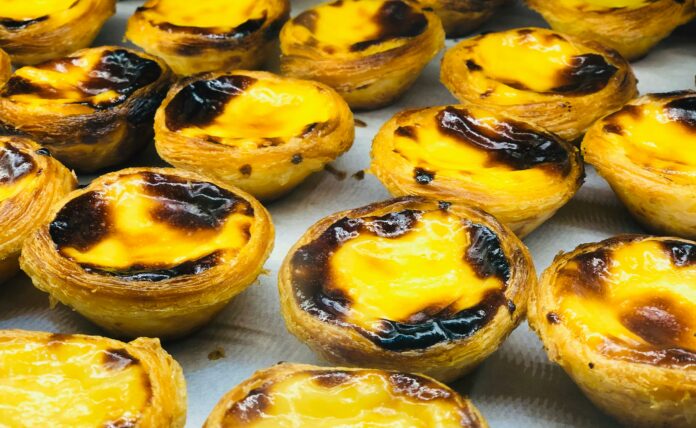Portugal boasts a rich tradition of conventual sweets, a cultural heritage that is deeply intertwined with the country’s history and culture. These delectable treats originate from the ingenious creativity of nuns and monks and have evolved into a diverse array of desserts that delight locals and visitors alike.
Let’s first examine the history and then explore some of the most iconic and mouth-watering conventual sweets that make up part of Portugal’s culinary heritage.
What Is a Conventual Sweet?
A conventual sweet in Portugal refers to a dessert originally created in convents and monasteries. These sweets date back to the 15th century. Portuguese conventual sweets are distinct, using primarily egg yolks, abundant sugar, and minimal flour, resulting in exceptionally rich desserts.
This led to a diverse array of sweets, each with a unique story and origin, as the nuns and monks used these ingredients to create various pastries, cakes, and puddings.
Conventual sweets are an important part of Portugal’s culinary heritage. Some examples, which we list below, include the iconic Pastéis de Nata, commonly known as egg custard tarts, and “pão de ló,” a sponge cake.
The History of Portuguese Conventual Sweets
The notoriety of conventual sweets grew from the 15th century, fueled by the availability of sugar cane from Brazil and Madeira. Portugal, a significant egg producer in the 18th and 19th centuries, had an abundance of egg yolks due to the export of egg whites and their use in wine production and laundry. This surplus led convents to create a myriad of sweets for religious festivals and private sales.
Additionally, convents served as educational and refuge spaces, where nobles’ daughters, often joined by servants, contributed to the sweets’ preparation. This collaborative environment fostered the development and sharing of countless recipes. Thus, conventual sweets are rich in history and a beloved component of Portuguese culinary art.
The convents of the Poor Clares, Santa Clara, and the Carmelites created the most famous sweets. This would come in handy when religious orders were closed after 1834’s Liberal Revolution, forcing convents to sell sweets to survive. Nuns passed recipes to families or pastry shops. However, many recipes were lost or destroyed. Today, top pastry shops across Portugal guard their secret recipes closely.
Now that we’ve learned the history, let’s jump into some of the most well-known conventual sweets which you are likely to see in one of Portugal’s many pastry shops.
1. Pastel de Nata – The Quintessential Portuguese Tart
Pastel de Nata, a crunchy tart filled with a luscious egg cream, is a beloved symbol of Portuguese pastries and the most famous Portuguese food worldwide. Originating in the Jerónimos Monastery in Lisbon, this dessert has captured the hearts of visitors from all over the world with its unique flavor and texture. Roasted to perfection and often dusted with cinnamon or powdered sugar, Pastel de Nata is a must-try for anyone seeking an authentic taste of Portugal.
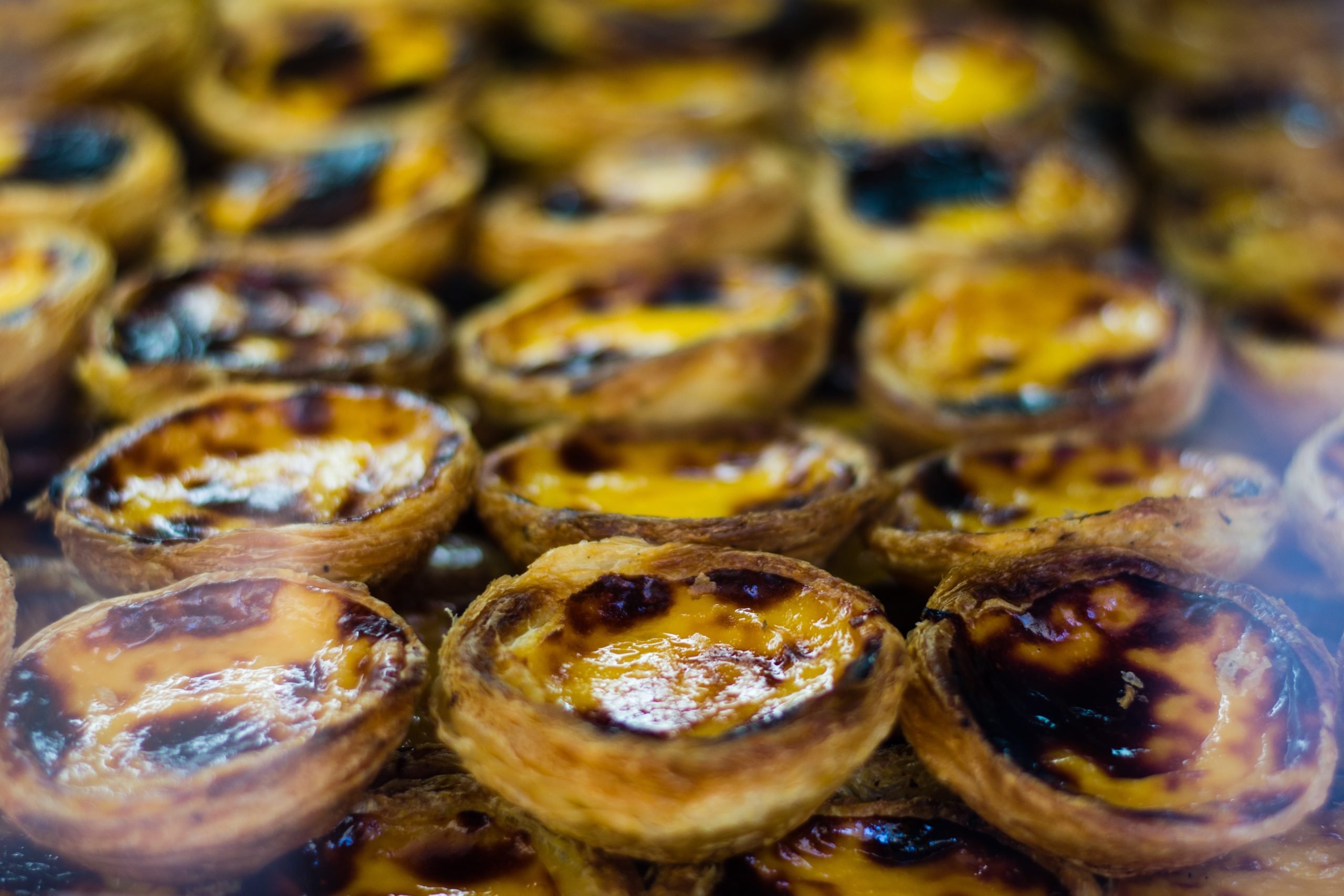
2. Ovos Moles – Soft Eggs from Aveiro
Ovos Moles, meaning “soft eggs,” is a traditional dessert hailing from Aveiro in central Portugal. Made from egg yolks and sugar, this delicacy is often shaped into intricate forms like shells, fish, or moliceiros (typical boats of Aveiro). Designated as a product with Protected Geographical Indication by the European Union, Ovos Moles offer a one-of-a-kind and delightful culinary experience.
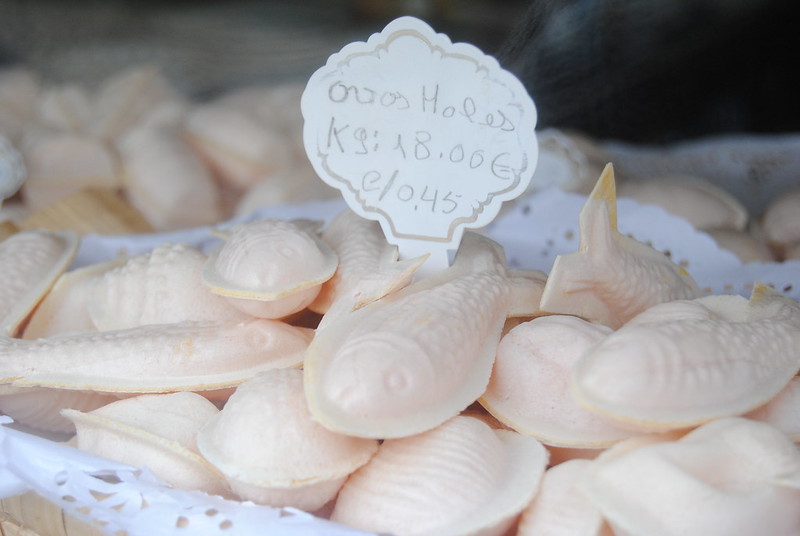
3. Bolo Rei – The Kings Cake of Christmas
Bolo Rei, or Kings Cake, is a festive delight enjoyed during Christmas and Epiphany in Portugal. This traditional cake, covered with nuts, dried fruits, and crystallized fruit, has a special place in Portuguese holiday celebrations. Perhaps it’s the fun tradition that adds a touch of excitement—if you find a fava bean, it means you’ll be responsible for the Kings Cake next year. Make sure you search for this bean when you enjoy a slice of cake.
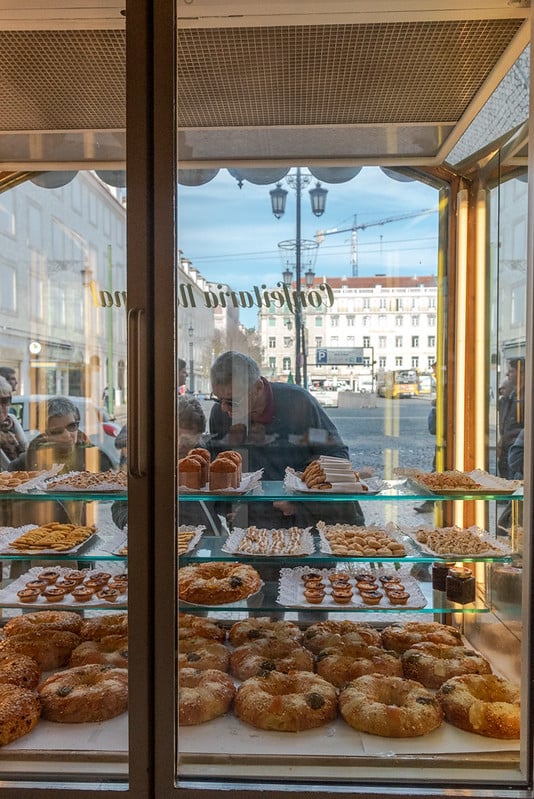
4. Pão de Ló de Ovar – The Decadent Sponge Cake
The Pão de Ló de Ovar is a traditional Portuguese sponge cake that comes from the town of Ovar, a town in Portugal. Known for its moist, fluffy texture and rich, eggy flavor, this delicacy is a beloved dessert across the country. It is often served during festive occasions and holidays, such as Easter. The cake’s distinctive feature is its slightly undercooked center, giving it a creamy consistency that sets it apart from other sponge cakes. If you have a penchant for Portuguese egg cream, this cake is guaranteed to captivate your taste buds.
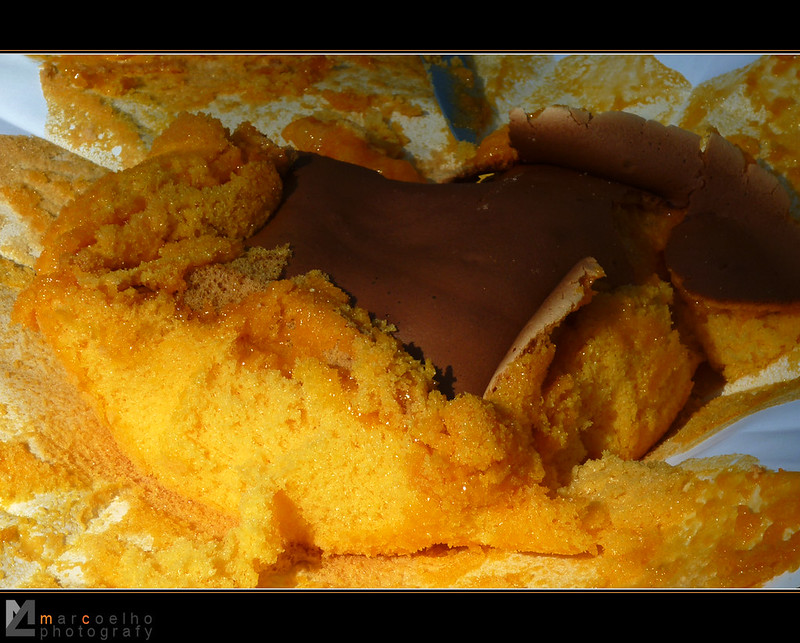
5. Lampreia de Ovos – A Unique Christmas Treat
Lampreia de Ovos, a sweet replica of a terrifying sea monster made from 50 egg yolks, is a unique Christmas treat in Portugal. This dessert, with its intricate design that resembles the ancient lamprey fish, showcases the creativity and artistry of Portuguese pastry chefs. Adorned with candied cherry eyes, peeled almond teeth, and sugary egg threads, Lampreia de Ovos is a visual and gastronomic delight.
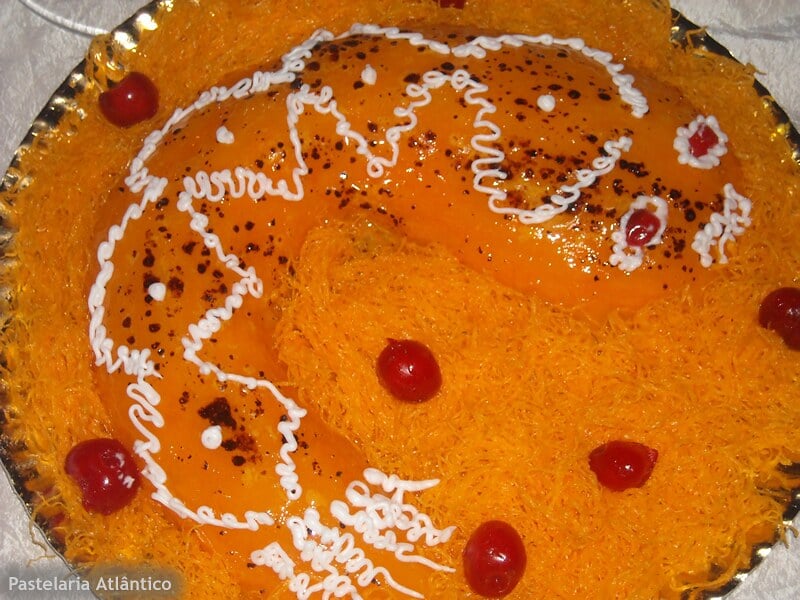
6. Cornucópias of Goodness – A Horn-Shaped Pastry
Cornucópias from Alcobaça’s Monastery in Alcobaça, a Portuguese city in the Leiria District, are exquisite delights. Crafted into horn-shaped, flaky pastry shells, they’re generously filled with a luscious sweet egg cream. These treats are deeply rooted in the country’s conventual confectionery tradition and embody the perfect balance of sweetness, making them a cherished dessert among locals and visitors alike.
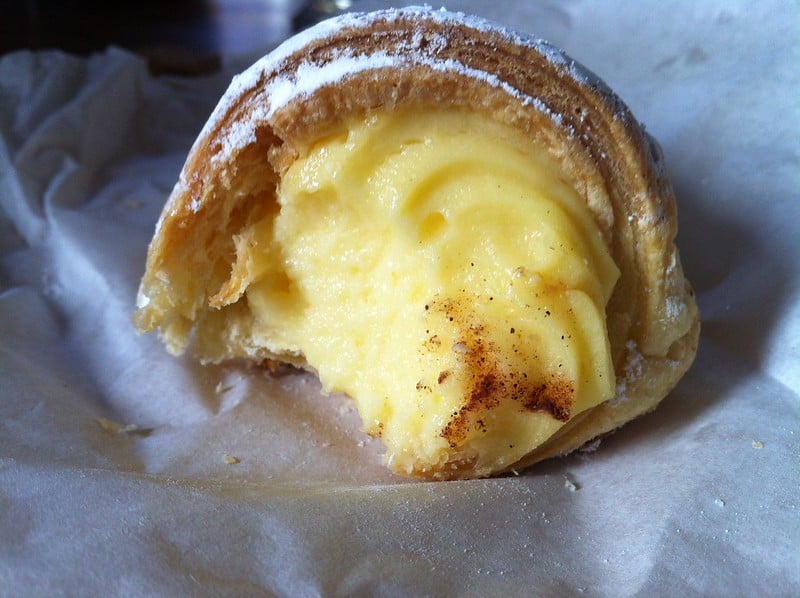
7. Queijadas – The Perfect Snack That Varies by Region
Queijadas are a popular Portuguese treat, small in size but rich in flavor. They are traditional pastries made from a blend of cheese, eggs, milk, and sugar, all encased in a thin, crisp pastry shell. Different regions of Portugal each offer a unique take on the recipe and add local ingredients to the mix. Queijadas are especially beloved for their creamy, sweet filling and are commonly enjoyed as a snack or dessert accompanied by a strong cup of coffee.
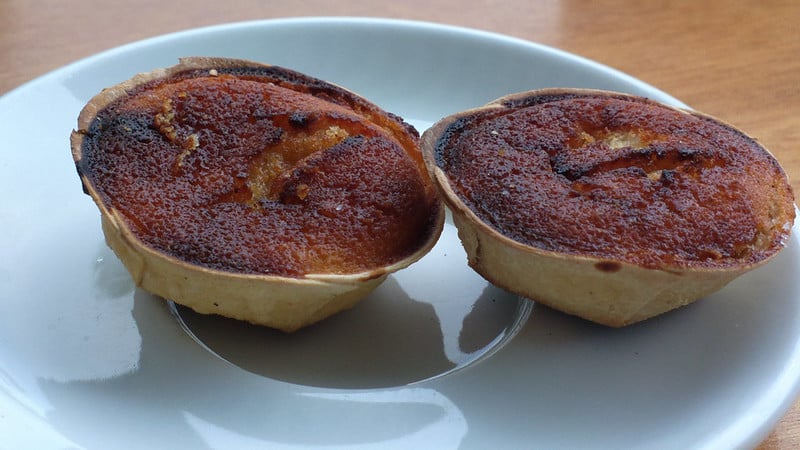
hugovk, Flickr
8. Heavenly Bacon—Or Is It?
The “Toucinho do Céu,” which translates to “Bacon from Heaven,” is another delicious pastry that has its roots in the São Bento monastery in Murça, Trás-os-Montes, Ovidelas. Surprising many with its name, this treat actually contains no bacon! Instead, it is a sumptuous cake that blends grated almonds, sugar syrup, Gila candy, flour, and egg yolks into a rectangular, powdered sugar-dusted masterpiece. Its intriguing name stems from the original use of lard in its recipe, and this sweet has also become a traditional treat in Alentejo, Guimarães, and Évora.
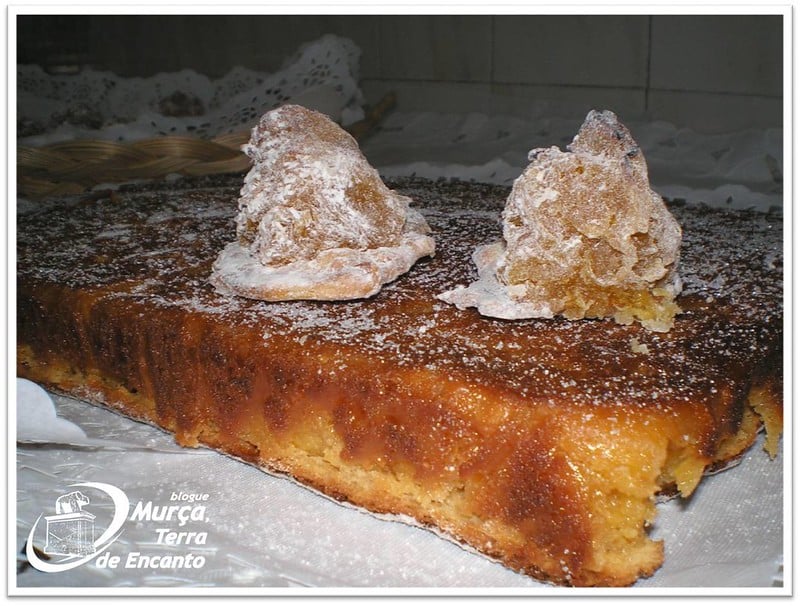
fotolegendas, Flickr
9. Pastel de Tentúgal from Nossa Senhora do Carmo Convent
The Pastel de Tentúgal is a renowned conventual sweet, born within the walls of the Nossa Senhora do Carmo Convent in Tentúgal, near Coimbra, and crafted by Carmelite nuns. This delicacy stands out as one of Portugal’s most celebrated conventual treats. It features a unique combination of crunchy filo pastry, encasing a soft, creamy filling of sweet egg cream. The contrast between the delicate, crisp layers and the rich, smooth center makes the Pastel de Tentúgal a divine culinary experience, beloved for its exquisite texture and flavor.
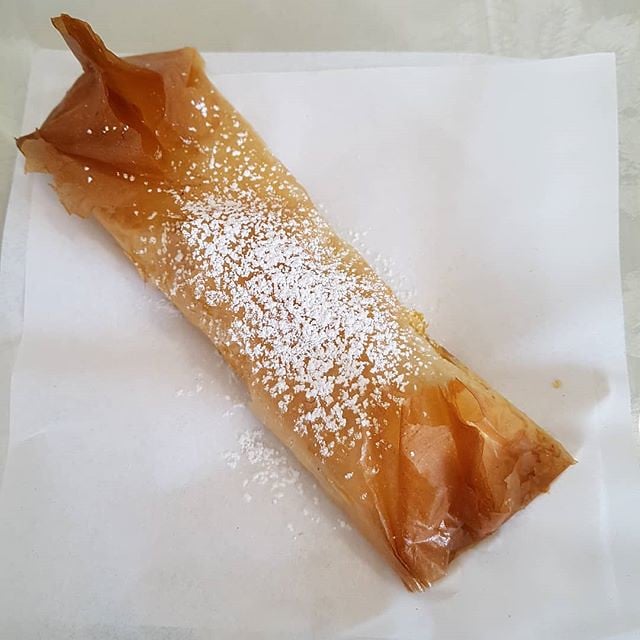
10. Pudim Abade de Priscos – A Clergyman Creates His Own Dessert
The Abade de Priscos pudding, a hallmark of Portuguese cuisine, owes its creation to Abbot Manuel Joaquim Rebelo in the 19th century, who served in Priscos, near Braga. Unlike many traditional sweets that originated in convents, this dessert was the innovation of a clergyman renowned for his exceptional culinary skills. Characterized by its rich egg content and the unconventional use of lard, the pudding boasts a uniquely silky texture and sweetness, offering a melt-in-the-mouth experience. Despite the surprising ingredient, the lard’s presence is cleverly masked, which contributes to the dessert’s divine quality without overpowering it.
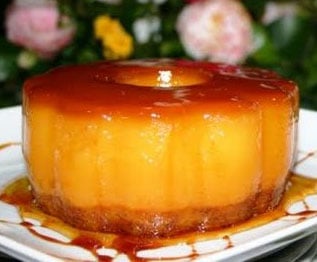
11. Brisas do Lis – A New Favorite
Brisas do Lis hold a special place in Leiria’s culinary tradition. Originating in the early 20th century, these sweets are made from egg yolk, sugar, and almonds. Although newer than many traditional recipes, they are highly cherished. They have repeatedly been named the “best conventual sweet” at Portuguese food events. This accolade underscores their significance in Portugal’s gastronomic scene.
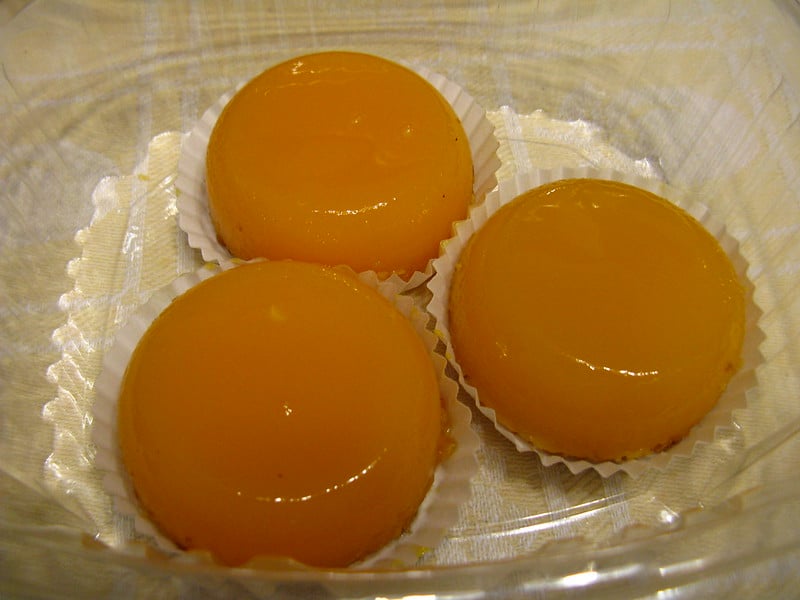
Tiago Castro, Flickr
12. Pastel de Feijão – An Everyday Favorite from Torres Vedras
Like the pastel de nata, the Pastel de Feijão from Torres Vedras is considered an everyday classic among conventual sweets. Common in Lisbon’s pastry shops, it’s a favorite for a mid-afternoon coffee snack. This sweet is comprised of a smooth purée of white beans, almonds, egg yolks, and sugar. It is encased in a crispy dough shell and sometimes has a light dusting of confectioners’ sugar. This blend of flavors and textures has made it a beloved treat.
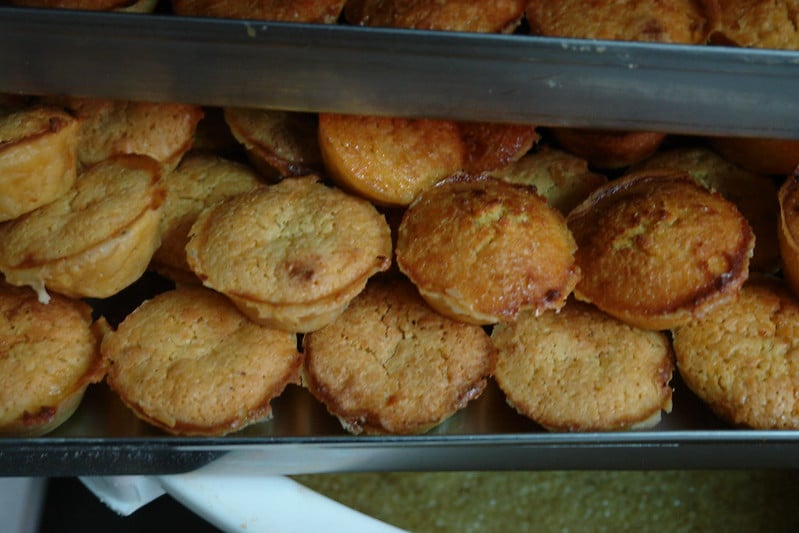
Final Thoughts
Portugal’s conventual treats, like Brisas do Lis, Pastel de Feijão, and the world-famous pastel de nata, embody the rich culinary heritage of the country. These sweets blend traditional ingredients with centuries-old recipes and offer a taste of history in every bite. Whether enjoyed as a mid-afternoon snack or a festive treat, they continue to be a unique and well-loved part of Portuguese gastronomy. The next time that you walk into a pastry shop in Portugal, see if you can recognize any of these tasty sweets!

